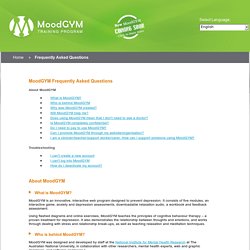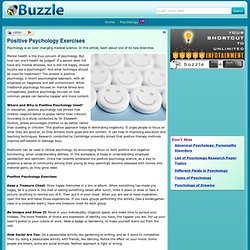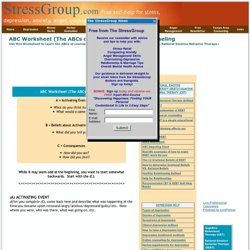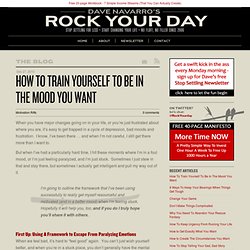

What Would Dad Say » Ten Ways To Make People Like You. Www.presence-awareness.com/uploads/COGNITIVEMINDFULNESSWORKBOOK13.pdf. » The Habit Change Cheatsheet: 29 Ways to Successfully Ingrain a Behavior. We are what we repeatedly do.

Excellence, then, is not an act, but a habit. – Aristotle Our daily lives are often a series of habits played out through the day, a trammeled existence fettered by the slow accretion of our previous actions. By Leo Babauta But habits can be changed, as difficult as that may seem sometimes. I’m a living example: in tiny, almost infinitesimal steps, I’ve changed a laundry list of habits. It’s possible. And while I’ve written about habit change many times over the course of the life of Zen Habits, today I thought I’d put the best tips all together in one cheatsheet, for those new to the blog and for those who could use the reminders. Keep it simple Habit change is not that complicated. The simple steps of habit change: 1. 2. 3. That’s it. The Habit Change Cheatsheet The following is a compilation of tips to help you change a habit. 1. 2. 3. 4. Tackle Any Issue With a List of 100.
The List of 100 is a powerful technique you can use to generate ideas, clarify your thoughts, uncover hidden problems or get solutions to any specific questions you’re interested in.

The technique is very simple in principle: state your issue or question in the top of a blank sheet of paper and come up with a list of one hundred answers or solutions about it. “100 Ways to Generate Income”, “100 Ways to be More Creative” or “100 Ways to Improve my Relationships” are some examples. “One hundred entries? Isn’t that way too many?” Bear with me: it’s exactly this exaggeration that makes the technique powerful. Happiness Exercises. MoodGYM: Frequently Asked Questions. What is MoodGYM?

MoodGYM is an innovative, interactive web program designed to prevent depression. It consists of five modules, an interactive game, anxiety and depression assessments, downloadable relaxation audio, a workbook and feedback assessment. Using flashed diagrams and online exercises, MoodGYM teaches the principles of cognitive behaviour therapy – a proven treatment for depression. It also demonstrates the relationship between thoughts and emotions, and works through dealing with stress and relationship break-ups, as well as teaching relaxation and meditation techniques. Who is behind MoodGYM? MoodGYM was designed and developed by staff at the National Institute for Mental Health Research at The Australian National University, in collaboration with other researchers, mental health experts, web and graphic designers, and software engineers. " The Norwegian translation of MoodGYM was contributed by the University of Tromso, Norway. Why was MoodGYM created? A resource for increasing your capacity for happiness through simple exercises.
Positive Psychology Exercises. Mental health is the true concern of psychology.

But how can one's health be judged? If a person does not have any mental illnesses, but is still not happy, should he/she see a psychologist? Wellness Worksheets. ABC Worksheet, ABCs of REBT, rational therapy abc chart, REBT, R. While it may seem odd at the beginning, you want to start somewhat backwards.

Start with the (C). ( A) ACTIVATING EVENT After you complete (C), come back here and describe what was happening at the time you became upset/stressed/angry/anxious/depressed/guilty/etc. Note where you were, who was there, what was going on, etc. (B) BELIEFS 1) list the irrational Beliefs (iBs) that lead to (C) (list the iBs that led to your reaction/behavior) How To Train Yourself To Be In The Mood You Want. Dec 27, 2010 When you have major changes going on in your life, or you’re just frustrated about where you are, it’s easy to get trapped in a cycle of depression, bad moods and frustration.

I know, I’ve been there … and when I’m not careful, I still get there more than I want to. But when I’ve had a particularly hard time, I hit these moments where I’m in a foul mood, or I’m just feeling paralyzed, and I’m just stuck. Sometimes I just stew in that and stay there, but sometimes I actually get intelligent and pull my way out of it. I’m going to outline the framework that I’ve been using successfully to really get myself resourceful and motivated (and in a better mood) when I’m feeling stuck. First Up: Using A Framework to Escape From Paralyzing Emotions When we feel bad, it’s hard to “feel good” again.
The reason for this is that steps take the emotion out of our situation and give us direction to simply act. A: AGREE With Yourself That You Don’t Want To Be In This Mood Right Now. Dave. Positive Psychology Exercise - Emoclear Self-Helpapedia. Emoclear Positve Psychology Exercise I: Doing Pleasurable, Important, and Meaningful Activities Every day for two weeks do the following: 1.
